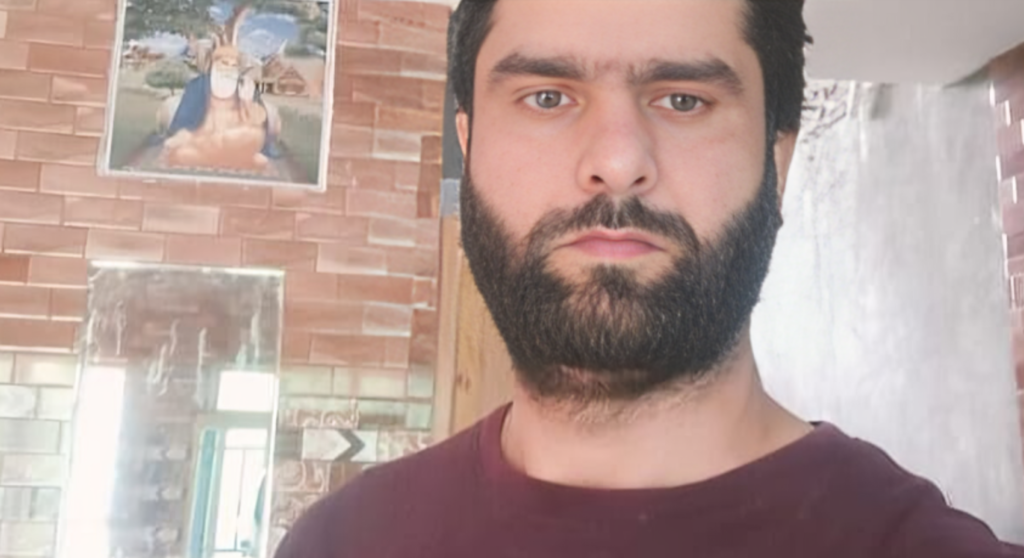
Imtiyaz Ahmad Pala and the Vicious Cycle of Custodial Deaths in Kashmir
Zahoor Ahmad Malik
Custodial deaths have become a norm in Jammu and Kashmir. The Indian state has consistently adopted the technique on a policy level where anyone perceived to be a suspect is abducted and tortured to death under custody. Most people in the region are picked up merely on the basis of suspicion and subjected to extreme methods of torture including giving electric shocks, stretching legs beyond 180 degrees, burning out different body parts, sexual molestation like sodomy, pulling out nails, beating by wooden logs or leather belts, hanging in different ways, water torture in different ways, applying numerous cuts and sprinkling chili powder including on sensitive parts and other extreme forms. According to a report by Amnesty International released in 2013, as many as 2230 people were killed under the custody of Indian military and police during the beginning seven months of the year 1995. The data maintained by the Kashmir Watch states that 173 cases of custodial killings had occurred in the region from November 2002-05. 122 such cases were reported from November 23, 2005, to June 6, 2008. Furthermore, 42 cases had been reported from January 1, 2009 to August 8, 2011 (Altaf 2013). According to a report released by Kashmir Media Service in 2013, 7003 people were killed under custody in Jammu and Kashmir from January 1989 to August 31, 2013. These are only reported cases that somehow got media attention while on the other hand, the region is rife with stories of custodial deaths where people especially youth were forcibly abducted and tortured to death in different military camps, police stations and infamous torture centers in the region. According to the Association of Parents of Disappeared Persons (APDP), an estimated 10000 people have been abducted by the Indian military between 1989 and 2006. The organization in 2017 told the state-run human rights commission that there were 3844 unmarked mass graves in Kashmir – 2,717 in Poonch and 1,127 in Rajouri, twin districts in the region that lie along Line of Control (LoC) that divides the disputed territory between India and Pakistan. Due to legal, political and moral impunity extended to the Indian military in Jammu and Kashmir, such cases often remain hidden or unheard of. Apart from custodial deaths, the rampant torture has affected thousands of people mentally and psychologically. A report from Doctors Without Borders mentions that half of all the inhabitants of the valley suffer from mental health issues. The report has found that 1.8 million adults – 45 % of the adult population in Kashmir – suffer from mental distress, Post Traumatic Stress Disorder (PTSD). There is almost no household in the region that has not gone through some kind of torture at the hands of Indian military, paramilitary and police. The data maintained by the NGOs on the subject is disturbing. India on the other hand has always tried to conceal such deaths or reports and at times feigned ignorance about any such incident or the involvement of different army units in this.
The vicious cycle of killing Kashmiris under custody continues unabated. In September 2020, a 23 year old youth Irfan Ahmad Dar from Sopore was abducted from his shop and killed under severe torture. His dead body was thrown on a road by police in an attempt to disassociate themselves from the killing. Before this incident, two youths were abducted forcibly by Indian military in the border district of Kupwara. One among them was released after severe torture and the other one namely Nazir Ahmad Khan remains missing till this date. In March 2019, a 29 year old young school principal Rizwan Ahmad Pandit was abducted and tortured to death in Pulwama district, south of the occupied territory.
The horrific policy of custodial killings has taken on an additional, alarming aspect. The military and police have begun to silence family members by threatening them to bury the deceased quietly or face having the victim framed as a “terrorist,” in which case the body would not be handed over but buried in a remote location. It is important to mention that the occupying authorities have criminalized resistance to such an extent that they refuse to hand over the bodies of martyrs and instead bury armed resistance fighters in distant places without a proper Islamic burial, a practice that has intensified since the abrogation of Articles 370 and 35A in 2019.
During a Cordon and Search Operation on the night of Sunday, June 2, a 38-year-old man named Imtiyaz Ahmad Pala was abducted from a village in the Pulwama district. On June 4, his family received a call from the police, instructing them to follow the officers to the Srinagar Control Room, where they waited until evening. They were then given an ultimatum: either bury the body of their loved one quietly or face terrorism charges, which would prevent them from receiving the body and performing proper Islamic burial rites. The family was forcibly made to dig the grave and send pictures to the police before they were given the body.
The gory details of how Imtiyaz Ahmad Pala was abducted and tortured, and how his family was coerced into a silent burial without raising their voice against this chilling murder were published by the Indian news outlet The Wire. The family reported that his entire body bore marks of severe torture, and even his private parts were disfigured.
The military administration in the region has resorted to such threats to either force families to bury their dead quietly or face having the body taken away and buried in a distant location. This is an attempt to silence people and cover up reports of gross human rights violations in the region.
Editor's Pick
Recent Reviews
Socials Share
Facebook
Twitter
LinkedIn



